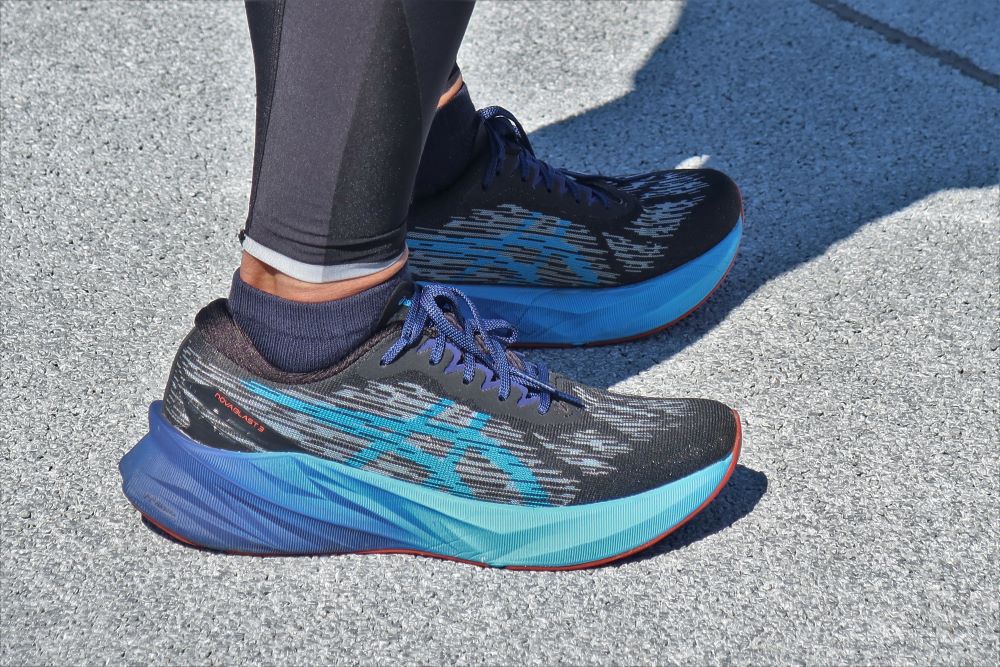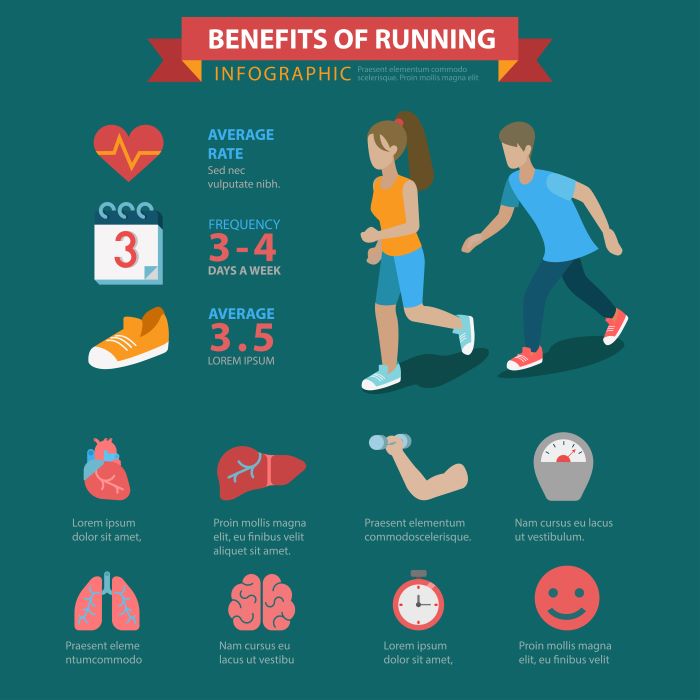Running training is more than just putting one foot in front of the other; it encompasses a variety of structured practices aimed at improving your overall performance and fitness. **Understanding running training means grasping its purpose and significance in achieving your athletic goals.**
Essentially, running training refers to a systematic approach to building endurance, speed, and strength through various workouts tailored to meet individual needs. This can include:
- Interval Training: Short bursts of high-intensity running followed by rest or low-intensity periods.
- Long Runs: Extended distances aimed at boosting aerobic capacity and stamina.
- Strength Training: Exercises designed to enhance muscle power, which can improve running efficiency.
- Recovery Runs: Easy-paced sessions that facilitate muscle recovery without exerting too much stress.
The importance of running training lies in its ability to help runners not only achieve their personal bests but also to reduce the risk of injury. By following a well-structured training plan, you can ensure that your body adapts to the demands of running, enhancing your performance over time.
To embark on your journey of running training and explore tailored workouts, visit our website to learn more and get started today! Click here.
Key Components of Effective Running Training Plans

Creating an effective running training plan involves several critical components that work together to optimize performance and achieve desired results. Understanding these components is essential for any runner looking to enhance their training experience.
Here are the key elements to consider:
- Goal Setting: Establishing clear, achievable goals is the foundation of any training plan. Whether it’s completing a specific race distance or improving your pace, having defined objectives keeps you focused.
- Structured Workouts: A mix of workouts, including long runs, tempo runs, and speed work, is vital for building different aspects of fitness. Each workout serves a specific purpose and contributes to overall performance improvement.
- Rest and Recovery: Incorporating rest days and lighter recovery runs is crucial. These allow your muscles to repair and adapt, reducing the risk of overtraining and injury.
- Nutrition and Hydration: Fueling your body with the right nutrients and staying hydrated supports optimal performance. Proper nutrition helps in recovery and provides the energy needed for intense training sessions.
- Progress Tracking: Monitoring your progress through logs or apps helps assess improvement and adjust your training plan as needed. Keeping track of distances, paces, and feelings during runs can provide valuable insights.
By integrating these components into your running training plan, you can create a balanced approach that fosters improvement and keeps you motivated throughout your running journey.
How to Set Realistic Goals for Running Performance

Setting realistic goals for your running performance is essential for maintaining motivation and achieving success. Goals provide direction and a sense of purpose, but they must be attainable to prevent frustration and burnout.
Here’s how to effectively set realistic running goals:
- Assess Your Current Fitness Level: Before setting goals, evaluate your current running abilities. Consider factors such as your average pace, distance capability, and any previous race times. Understanding where you stand will help you identify achievable targets.
- Use the SMART Criteria: Employ the SMART framework—Specific, Measurable, Achievable, Relevant, and Time-bound. For example, instead of saying, ‘I want to run faster,’ specify, ‘I want to run a 10K in under 50 minutes within three months.’
- Break It Down: Divide larger goals into smaller, manageable milestones. For instance, if your ultimate goal is to run a marathon, start by aiming for a 5K, then a half marathon. Celebrating these smaller achievements keeps you motivated.
- Consider External Factors: Take into account your lifestyle, work commitments, and other responsibilities. Make sure your goals are realistic given your schedule and resources, allowing for adjustments as necessary.
- Stay Flexible: Life can be unpredictable, so allow room for adjustments. If you encounter an injury or a busy period, be prepared to modify your goals and timelines without losing sight of your overall ambition.
By setting realistic goals, you pave the way for a more enjoyable running experience, leading to sustained progress and long-term success.
Techniques to Improve Your Running Endurance and Speed

Improving your running endurance and speed requires a combination of effective techniques and consistent training. By integrating these strategies into your routine, you can enhance your performance and achieve your running goals.
Here are some key techniques to consider:
- Incorporate Interval Training: This technique alternates between high-intensity bursts and recovery periods. For example, sprint for 30 seconds followed by one minute of walking or jogging. This approach boosts both speed and endurance by enhancing cardiovascular efficiency.
- Long Runs: Schedule weekly long runs to gradually increase your distance. This builds your aerobic base and improves stamina. Aim to increase your long run by about 10% each week to avoid injury while gradually enhancing your endurance.
- Strength Training: Don’t underestimate the power of strength workouts. Focusing on your core, hips, and legs can improve your running form and efficiency. Incorporate exercises like squats, lunges, and planks to build strength that translates into better running performance.
- Maintain Proper Nutrition: Fueling your body with the right nutrients aids recovery and enhances performance. Focus on a balanced diet rich in carbohydrates, proteins, and healthy fats. Stay hydrated to optimize your running endurance and speed.
- Practice Good Running Form: Pay attention to your posture, stride, and breathing. Keep your head up, shoulders relaxed, and arms at a 90-degree angle. Efficient form reduces energy expenditure and helps maintain speed over longer distances.
Implementing these techniques consistently will lead to noticeable improvements in both your endurance and speed, allowing you to reach new heights in your running journey.
Common Mistakes to Avoid in Running Training
As you embark on your running training journey, being aware of common mistakes can significantly enhance your experience and results. Avoiding these pitfalls ensures that you stay injury-free and progress effectively in your fitness goals.
Here are some frequent missteps to watch out for:
- Skipping Warm-ups: Failing to warm up properly before your runs can lead to injuries. Always allocate time for dynamic stretches and light jogging to prepare your muscles for the workout ahead.
- Overtraining: While pushing your limits is essential for progress, overtraining can lead to burnout and injuries. Ensure you incorporate rest days into your training schedule to allow your body to recover and rebuild.
- Neglecting Footwear: Wearing improper or worn-out shoes can adversely affect your running form and lead to discomfort or injuries. Invest in a good pair of running shoes that provide the necessary support and cushioning for your foot type.
- Ignoring Hydration: Staying hydrated is crucial for optimal performance. Many runners underestimate the importance of proper hydration, which can significantly impact their endurance and speed. Drink water before, during, and after your runs.
- Setting Unrealistic Goals: While ambition is admirable, setting goals that are too ambitious can lead to disappointment and injuries. Start with achievable milestones and gradually increase your targets as you gain confidence and fitness.
Avoiding these common mistakes will help you establish a more effective and enjoyable running routine, allowing you to focus on achieving your fitness aspirations.
Joining the Running Community for Support and Motivation

One of the most rewarding aspects of running is the opportunity to connect with a vibrant community of enthusiasts. Joining a running community can provide invaluable support and motivation, helping you stay committed to your training and achieve your fitness goals.
Being part of a running group or club offers numerous benefits:
- Shared Experiences: Engaging with fellow runners allows you to share experiences, tips, and advice. Whether you’re a beginner or a seasoned marathoner, learning from others can enhance your running knowledge and skills.
- Accountability: Having training partners encourages accountability. When you commit to regular group runs, you’re less likely to skip workouts, knowing that others are counting on you.
- Motivation: The camaraderie within a running community can be incredibly motivating. Celebrating each other’s achievements, big or small, fosters a positive atmosphere that keeps you inspired to push your limits.
- Access to Resources: Many running clubs offer access to workshops, training plans, and experienced coaches who can provide tailored guidance to improve your performance.
- Social Connections: Beyond just running, these communities often host social events, races, and challenges, allowing you to forge lasting friendships based on a shared passion.
Whether you prefer the energy of a large club or the intimacy of a small group, there’s a place for you in the running community. Visit our website to learn more and get started today! Click here.


